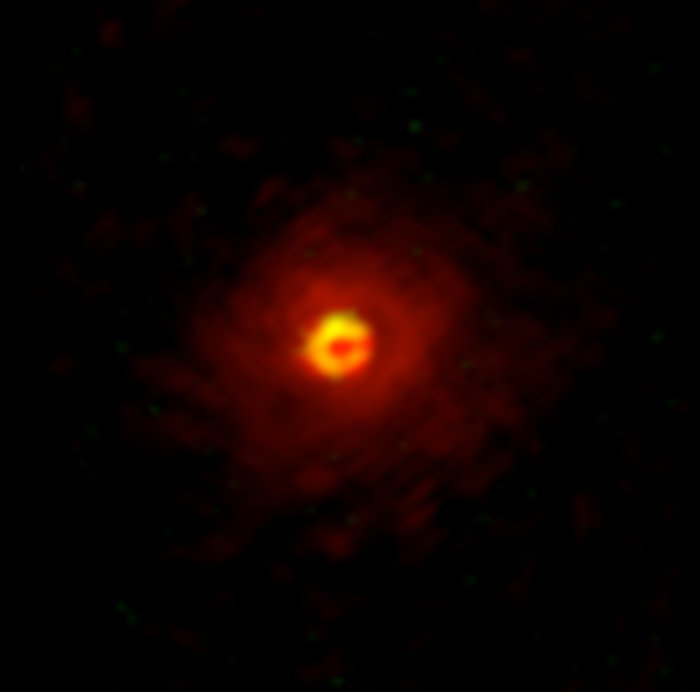Winds blowing on a dying star
Stars like our Sun constantly eject large amounts of gas and dust into space, but over their lifetimes the levels of this activity change. Scientists continually scour the skies in search of explanations for how and why these changes occur.
One such stage of development is the asymptotic giant branch (AGB) near a star's end of life. Dust around these stars plays an important role in regulating stellar winds. This dust is composed of many elements — including metals — which disperse into the galaxy as the winds accelerate.
Two such elements are silicon and aluminium. In space, silicon is ten times more abundant than aluminium. However, many oxygen-rich AGB stars are rich in aluminium oxide dust — the source of aluminium — but poor in silicate dust — the source of silicon. This has puzzled researchers: why is aluminium oxide dust so abundant around oxygen-rich AGB stars?
A research team led by Aki Takigawa of Kyoto University have utilized a new high spatial-resolution array to obtain and analyse detailed images of the dust surrounding an AGB star.
"Previously, there was a limit to how well we could observe stars," explains Takigawa. "Now, thanks to the high spatial resolution of the Atacama Large Millimeter/submillimeter Array, or ALMA, we can obtain images of stars in finer detail. We pointed it toward an aluminium oxide-rich AGB star in the constellation Hydra, W Hydrae."
Gas molecules aluminium monoxide and silicon monoxide — AlO and SiO — accelerate around a star, eventually forming aluminium oxide and silicate dust. The team observed that AlO was distributed within three stellar radii of W Hydrae, reflecting the results of previous data.
Surprisingly though, SiO was detected beyond five stellar radii, and moreover 70% of these remained gaseous, without forming into dust.
"These results indicate that as aluminium oxide accumulates near a star, the addition of a small amount of silicate dust may trigger wind acceleration," elaborates Takigawa. "This decreases gas density, further suppressing silicate dust formation."
"This may explain the presence of aluminium-oxide-rich but silicate-poor AGB stars."
These results shed light not only on the dynamics of gas and dust surrounding stars, but also on the importance of studying both together. The team plans to continue using ALMA to elucidate gas and dust dynamics in the universe.
Crédit:ALMA (ESO/NAOJ/NRAO), Takigawa et al.
À propos de l'image
| Identification: | 20171102_whya |
| Type: | Observation |
| Date de publication: | 9 novembre 2017 |
| Taille: | 1048 x 1036 px |
À propos de l'objet
Fonds d'écran
Coordinates
| Position (RA): | 13 49 1.99 |
| Position (Dec): | -28° 22' 3.47" |
| Field of view: | 0.09 x 0.09 arcminutes |
| Orientation: | North is -0.0° left of vertical |
Couleurs & filtres
| Domaine | Longueur d'onde | Télescope |
|---|---|---|
| Millimétrique 338 GHZ | 886 μm | Atacama Large Millimeter/submillimeter Array Band 7 |

